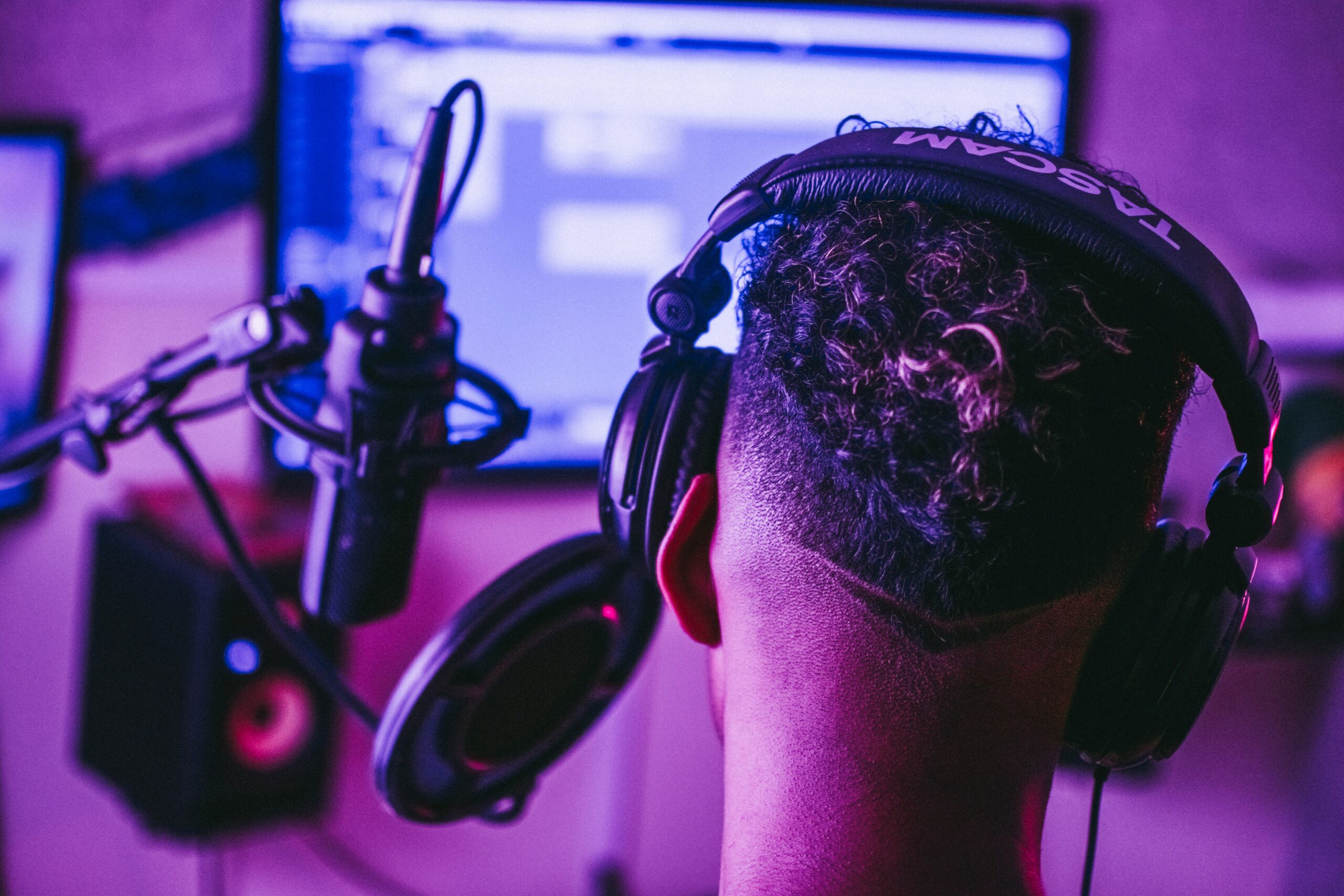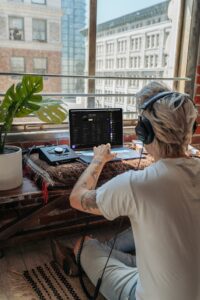So, you want to start a home recording studio or workstation? Good news: you’re in good company. Many of today’s successful producers and engineers started off in a beginner bedroom setup before upgrading to a professional studio. Knowing exactly what’s needed to follow in their footsteps, however, can sometimes be challenging, confusing and just a bit overwhelming. To make things easier, we’ve compiled a list of the essential equipment you’ll need to get the most out of your home studio.

Let’s Start with a Laptop
First things first: you’re going to need a computer. We suggest you check out this minimum laptop/PC specs for music production guide to see if your current computer meets the requirements; it could potentially save you a ton of money. If you need to drop some cash on a new computer, however, look for something with at least 8GB RAM and a 4-core processor that can handle synths and small sample libraries. Macs or PCs with Intel processors are usually a pretty safe place to start and come in a range of prices for any budget.
 All About the Audio (Interface)
All About the Audio (Interface)
Next up, you need to get your hands on an audio interface ― the middleman between your sound input and your computer. The interface you invest in will depend on how many sound sources you plan to record at once; the more sources, the more inputs your audio interface will need. Looking to record a vocal track and an instrumental at the same time? That will call for two inputs. Lucky for you, most entry-level audio interfaces will automatically have two inputs, so the choice is all yours if you’d like to upgrade.
Don’t Forget the DAW
Going hand-in-hand with our audio interface will be our DAW (Digital Audio Workstation). There are several different programs that you can choose from, varying in price and functionality, depending on what you’re trying to accomplish in the studio. While the industry standard, Pro Tools, is an incredible option, it can be a difficult investment to make with a $500 yearly subscription cost. For more accessible options, many free DAWs are available as a great resource for beginner producers. Still need help deciding? We recommend checking out this full guide by ProducerHive to really break things down for you.
Mic Up!
Now it’s time to actually get recording! You’ll collect a great number of mics as you advance through your career, but when you’re just starting off, one or two quality microphones will do the trick. As for what type of mics you get, we recommend one ‘old faithful’ mic that can handle anything you throw at it, and one ‘specialty’ mic for use in your particular genre of work. There are a lot of classic, dynamic mics on the market that will get practically any job done. As for your specialty mic, condensers and instrument mics are good options to consider. These will allow you to home in on whatever instrument or sound you’re trying to spotlight most in your music.
Playing with Plug-Ins
Once you’re able to process and work with the audio you’ve recorded, it’s time to consider whether you’re going to want effect plug-ins. These will expand on the reverb effects offered by your DAW and open a world of possibilities when it comes to sounds and sound manipulation. Like DAWs, there are plug-in options for any budget. You can choose to download free plug-ins, or purchase from brands who offer plug-in bundles that give you more bang for your buck.
 How’s About Some Headphones?
How’s About Some Headphones?
To hear all those teeny, tiny details in your projects, a good pair of studio headphones will be a lifesaver. Not only will you use these for recording your audio, but you can also rely on them as a reference when you’re in mixing in post. You’re going to want a pair that seals firmly around the ears (to prevent audio bleeding) and is sonically flat (to give you an accurate sound representation). Luckily, if you’re just starting out building your home recording workstation, and not looking to break the bank, you can find a good quality pair of ‘phones from trusted audio brands for as low as $99.
Monitoring Your Mixes
Finally, to go along with those headphones, you’re going to want some studio monitors. The difference between studio monitors and regular, consumer speakers? Monitors are designed to be sonically neutral, allowing you to hear your audio exactly as intended, without any manipulation in the bass or high-end. Studio monitors come in a range of different sizes, but bigger doesn’t always mean better. For beginners, a smaller monitor will cost less and take up less space, and won’t risk overpowering the size of your home studio. A great place to start is this guide from Magnetic Magazine, which goes over the best tips and tricks for getting the perfect monitor setup in your bedroom studio.
That’s a Wrap! Now What?
With your studio fully stocked, it’s time to get creating! D. Pagan Communications not only creates news content like the blog above, but also offers a wide array of public relations services for brands looking to increase market exposure. Interested in inspiring producers and promoting new, need-to-know music industry equipment? Contact our team today to see how we can help!
